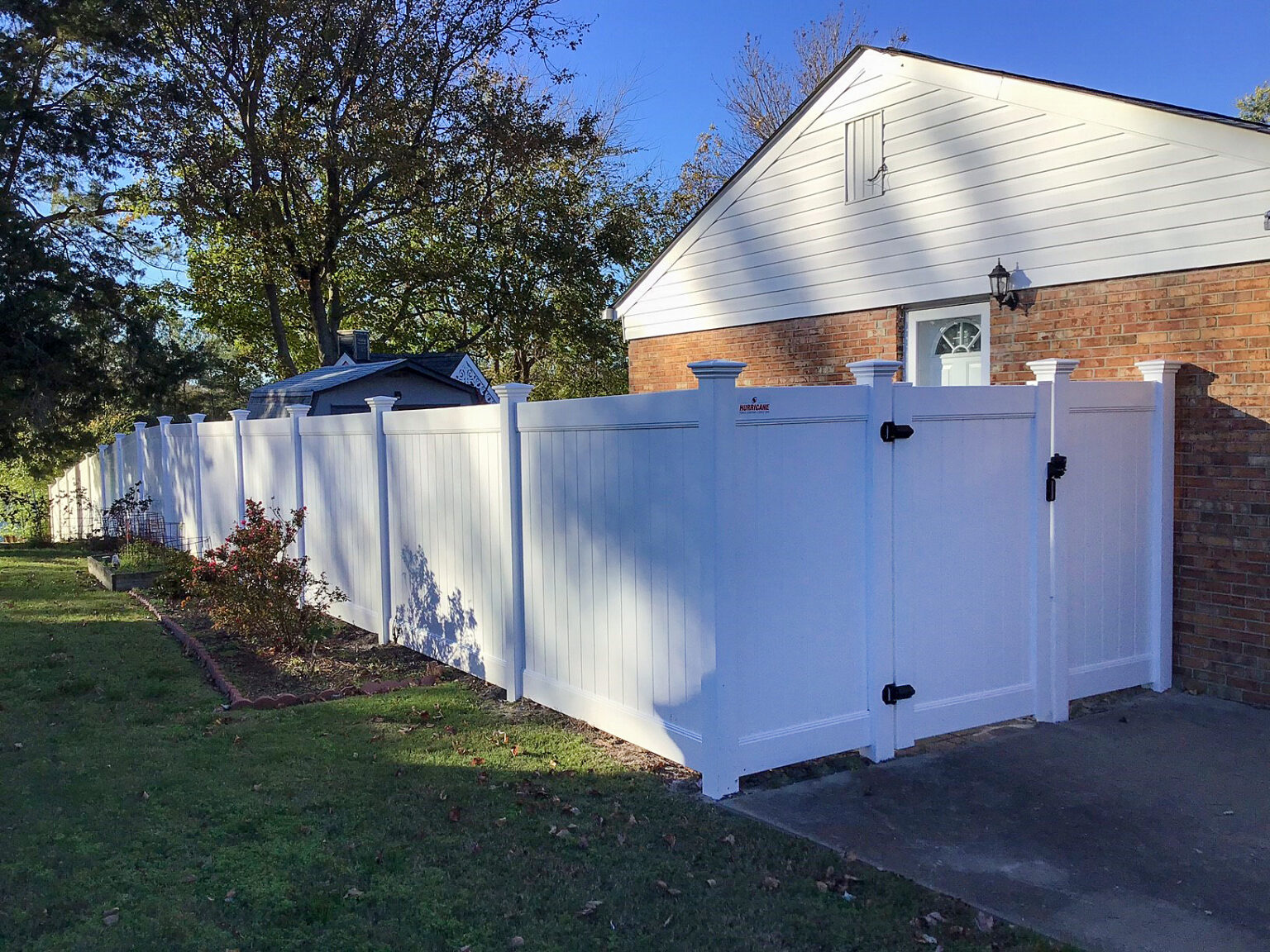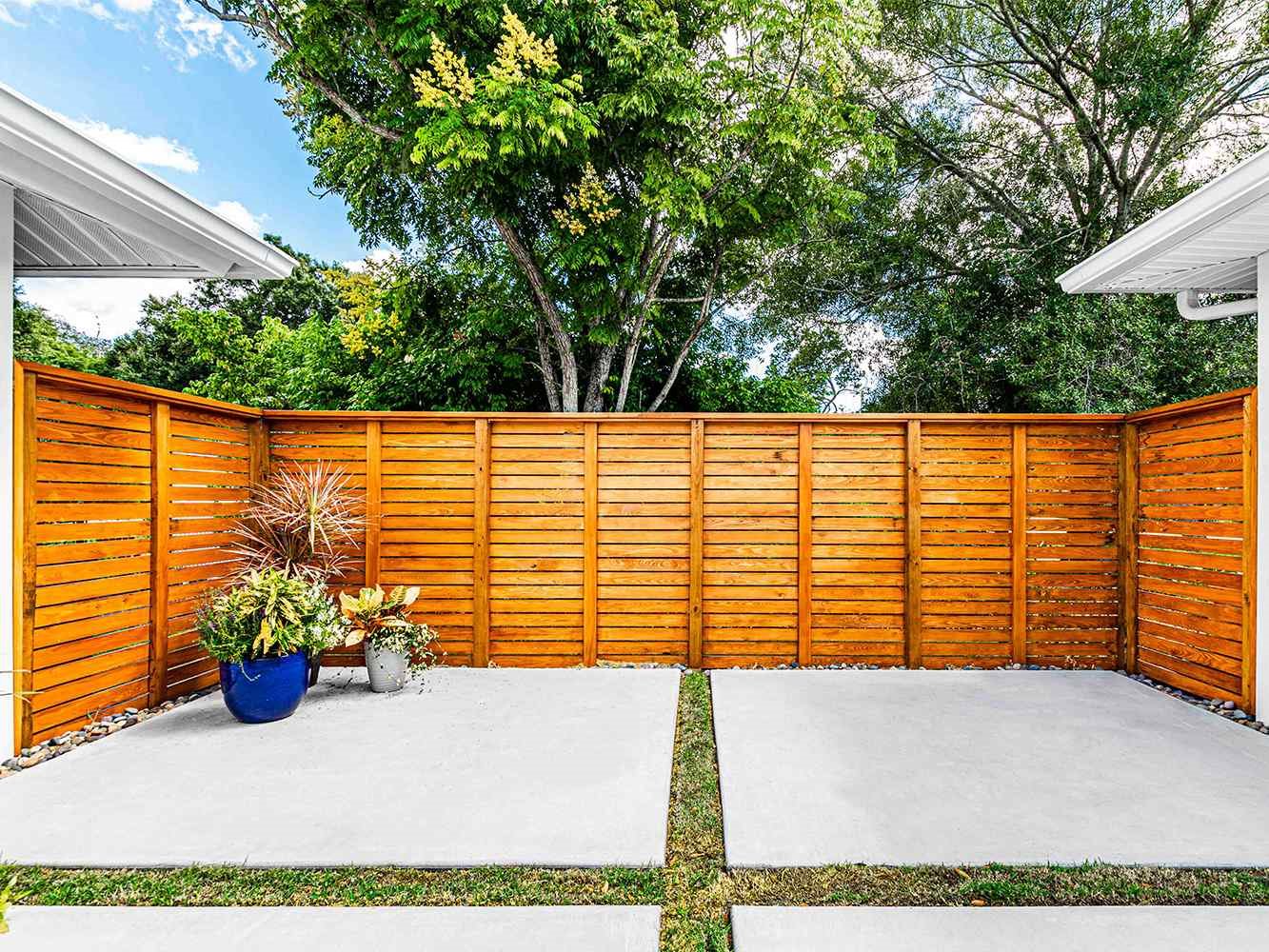Long-Term Solutions for Durable Fence Repair
Long-Term Solutions for Durable Fence Repair
Blog Article
How to Identify Common Issues That Require Immediate Fence Repair
When it comes to keeping your fencing, it is essential to find concerns before they end up being bigger issues. On a regular basis looking for indications of decomposing timber, leaning panels, or corrosion can conserve you time and cash over time. You may not recognize how weather condition and insects can jeopardize your fence's honesty. Allow's check out the usual indications that suggest your fence needs immediate attention, so you can maintain your property secure and looking its finest.
Indications of Rotting Wood in Wooden Fences
Have you discovered your wooden fence looking a bit shabby? If so, it could be time to look for indications of decomposing wood. Examine the base of the articles and panels for soft places. If you continue the wood and it really feels squishy or falls apart, that's a clear indication of rot. Next, look for staining or dark spots on the timber-- these often signal dampness damage. Pay focus to any peeling off paint or coating, as this can expose the wood to more decay. Additionally, a poignant, mildewy smell can suggest fungal growth. Don't fail to remember to inspect joints and links; if they hang or crumbling, the timber underneath is most likely jeopardized. By capturing these indications early, you can protect against much more substantial damage and keep your fence standing strong. Normal maintenance is crucial to prolonging the life of your wooden fence.
Leaning or Tilting Fence Panels
It's vital to understand what triggered it if you have actually observed your fencing panels tilting or leaning. This issue might suggest underlying architectural damage that requires your focus. Let's discover the typical causes and the repair options offered to obtain your fencing back fit.

Reasons For Leaning Panels
It's usually an indication of underlying problems that need attending to when you see your fencing panels leaning or tilting. One common cause is poor drain; extreme water can wear down the dirt around the fence posts, deteriorating their assistance. An additional offender might be solid winds or storms that push versus the panels, especially if they're not appropriately secured. Furthermore, the all-natural settling of dirt over time can trigger articles to change, leading to a tilt. Parasites, like termites, can jeopardize the stability of wood panels, triggering them to lean. Ultimately, bad setup techniques may result in panels not being firmly set, leaving them at risk to leaning under stress. Address these concerns immediately to keep your fencing's integrity.
Indications of Architectural Damage
Observing leaning or turning fencing panels can be startling, as these concerns commonly show structural damage that requires instant interest. When your fencing begins to lean, it may signal that the messages are shifting or that the soil around them has actually eroded. Pay very close attention to gaps between messages or panels, as these can additionally suggest instability. deck builder. Furthermore, check for splits or splintering in the timber, which can compromise the total structure. It can jeopardize the honesty of the fence if you see corrosion or deterioration on steel elements. Keep in mind, overlooking these indications can bring about extra serious damage down the line, so it's necessary to analyze the scenario without delay and act before it worsens
Repair Service Options Available

Rust and Corrosion in Metal Fences
If you own a metal fencing, you might discover corrosion and deterioration creeping in gradually, particularly if it's exposed to dampness. These issues not just impact the appearance of your fence however can additionally compromise its structural integrity. To recognize corrosion, look for reddish-brown areas or spots, which suggest the metal is oxidizing. Rust can spread out swiftly if left neglected, weakening the fencing and leading to costly repairs.To tackle corrosion and deterioration, you must cleanse the impacted locations with a wire brush and apply a rust-inhibiting guide. Once the primer dries out, consider repainting the fence with a weather-resistant paint to secure it additionally. Routine upkeep, such as inspecting for go to my site indications of corrosion and retouching paint as required, will certainly assist expand your fence's life expectancy. Dealing with these concerns immediately guarantees your steel fencing remains strong and visually appealing for many years ahead.
Cracks and Splits in Plastic Fencing

Reasons For Vinyl Damages
Plastic fence is prominent for its toughness, yet it can still experience from fractures and splits as a result of various variables. One significant cause is severe temperature level changes. It can compromise the product over time when vinyl increases in the warmth and agreements in the chilly. Furthermore, direct exposure to extreme sunlight can cause UV degradation, making the plastic brittle. Physical effects, like accidental crashes or heavy branches, can additionally create fractures. Poor installment or using low-grade materials can worsen these issues. Age plays a duty; older vinyl fence is a lot more at risk to damage. Regular examinations can help you determine these factors prior to they lead to considerable troubles. Take positive steps to guarantee your fencing remains solid and undamaged.
Fixing Cracks Efficiently
Splits and divides in your vinyl fence can be concerning, addressing them immediately can prevent additional damage and preserve the fence's appearance. Examine the dimension of the fracture. For little splits, a our website plastic repair service kit often includes adhesive that can bond the sides, giving a smooth fix. Tidy the area thoroughly before using the sticky, guaranteeing it sticks correctly. For larger divides, you may need to use a plastic patch. Cut the patch to dimension, use adhesive around the sides, and press it strongly onto the split. Enable it to treat based on the supplier's instructions. Regular maintenance and quick repair work can prolong your fencing's life-span, keeping it looking terrific for many years to come.
Loosened or Missing Out On Fencing Blog Posts
Loose or absent fencing blog posts can threaten the stability of your whole fencing framework. If you observe any posts leaning or tottering, it's important to address the problem right away. Check for any indications of activity, as this can cause more damage gradually. You can conveniently evaluate the issue by offering each post a gentle shake-- if it really feels unstable, it's time to take action.For missing posts, you'll need to replace them immediately to keep your fence's integrity. Make certain they're firmly anchored in the ground with concrete or gravel for added security when you install new blog posts. If an article is loosened, tighten it by including additional assistance or driving it deeper right into the ground.Ignoring these issues can bring about larger troubles, like spaces in your fence or also complete collapse. So, maintain an eye on your articles and remain positive regarding repairs!
Damages From Climate and Natural Environment
Weather and natural aspects can ruin your fencing, bring about numerous types of damage that require punctual focus. Hefty rain can trigger wood to rot, making it unpredictable and weak. Snow buildup might flex or damage panels, while solid winds can uproot fence posts or cause sections to lean.If you observe splits or splintering in wood fencings, it signifies drying due to intense sun exposure. Steel fences can corrosion if protective coverings put on off, particularly in seaside or humid areas.Inspect your fencing consistently after tornados or extreme weather to capture any type of damages early. Dealing with these issues swiftly can conserve you from pricey repair work down the line. Do not read this wait until a little trouble develops into a significant one; stay positive and maintain your surround leading shape to maintain both functionality and aesthetic charm.
Insect Infestation and Termite Damage
When you notice indications of insect problem or termite damage, it's vital to act promptly to stop further damage. Try to find mud tubes along your fence or hollow-sounding timber, as these suggest termites are at work. You might also see little holes or frass, which is termite droppings resembling sawdust. If you detect any of these indicators, it's time to assess the damage.Don' t wait up until it's far too late; insects can compromise your fence's integrity. Inspect the surrounding area for beetles or ants, as they might be adding to the problem. If you believe an infestation, think about speaking to an insect control expert to confirm and treat the issue.Repairing or changing damaged areas of your fence quickly not just recovers its toughness however likewise avoids bugs from spreading out additionally. Remain alert to maintain your home protected and pest-free.
Regularly Asked Inquiries
Just how Typically Should I Inspect My Fencing for Damages?
You should inspect your fencing a minimum of two times a year, ideally throughout springtime and loss. Normal checks assist you identify damages early, saving you money and time on repairs while preserving your property's look and protection.
Can I Repair a Fencing Myself or Hire a Professional?
You can certainly fix a fence on your own if you have the right tools and abilities. Nonetheless, employing an expert guarantees high quality work and conserves you time, specifically for complicated repairs or considerable damage.
What Devices Are Required for Fundamental Fencing Repair Work?
For standard fence repair work, you'll require tools like a hammer, screwdriver, pliers, a saw, a degree, and measuring tape. deck builder. Relying on the repair work, you could also call for nails, screws, or substitute boards
Exactly How Much Does Fence Repair Usually Cost?
Fencing repair work prices differ widely, yet you can expect to pay in between $200 and $1,500 depending on products, labor, and level of damage. It's wise to get multiple quotes for the best offer.
When Is the Ideal Time of Year for Fencing Services?
The very best time for fencing repairs is throughout moderate climate, commonly in spring or early autumn. You'll prevent extreme temperatures, making it much easier to function and ensuring the materials set appropriately for lasting resilience (deck builder). Discovering leaning or tilting fence panels can be startling, as these concerns often indicate structural damage that needs immediate interest. Absent or loosened fence messages can undermine the security of your entire fence framework. Snow build-up might flex or damage panels, while strong winds can root out fence blog posts or create areas to lean.If you notice cracks or splintering in wood fencings, it's an indicator of drying out due to extreme sun exposure. Metal fences can rust if protective coverings put on off, specifically in humid or coastal areas.Inspect your fencing routinely after storms or extreme climate to catch any type of damage early. Fencing repair work prices vary extensively, but you can expect to pay in between $200 and $1,500 depending on materials, labor, and level of damages
Report this page